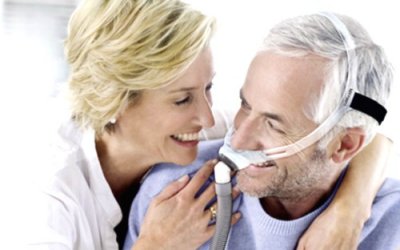Snoring
What is snoring?
Snoring is noisy breathing through the mouth and nose during sleep. This is caused by partial upper airway obstruction, and occurs during sleep when the muscles of the upper airway relax and partially obstruct. Up to 30% of the adult population snore regularly.
Factors that cause snoring

- Age – (Loss of muscle tone).
- Obesity
- Sleeping on your back
- Enlarged tonsils or adenoids
- Alcohol – drinking relaxes the muscles
- Use of certain drugs (e.g. sleeping tablets)
If you snore loudly with occasional pauses in breathing, and frequently wake up during the night, you may have obstructive sleep apnoea. You can complete the Epworth Sleepiness Scale to asses if you have a sleep disorder.
Treatment options
Sleep disorders are treatable. Your doctor can evaluate your sleep problems with a sleep study. Options are:
Lifestyle changes
There are several lifestyle changes that can be made to assist in the treatment of snoring. However, except in the mildest cases, additional measures are usually needed.Avoid alcohol and any sedating medications.If you are overweight, weight loss of even 3-5kg, may reduce the level of snoring. Most snorers are loudest while sleeping on their backs, therefore positioning strategies or raising the head with an additional pillow may help reduce snoring.
Oral Appliances
These devices are specially designed appliances worn in the mouth during sleep, and most effectively used in mild to moderate apnoea. They maintain an opened, unobstructed airway to alleviate snoring. There are two basic types of oral appliances.
- Tongue retaining devices:
Tongue retainers maintain a forward positioning of the tongue by means of a suction bulb to try and prevent collapse of the upper airway. - Mandibular Advancement Splints (MAS) :
MAS devices work by repositioning and maintaining the lower jaw in a protruded position during sleep. This opens the upper airway by tightening the tissues at the back of the throat to allow air to flow freely. Wearing a MAS is painless and non-invasive and can be used in conjunction with other treatments. If complications arise, the patient is advised to see their dentist and stop wearing the device. Most people find that it only takes a couple of weeks to adjust to wearing the appliances.
Continuous Positive Airways Pressure
Continuous Positive Airways Pressure (CPAP) is the most common and effective treatment for patients with persistent snoring and sleep apnoea. It prevents airway collapse during use. The patient wears a mask over the nose and/or mouth during sleep, and air is blown in through the mask into the upper airway. The air splints the upper airway and prevent the airway from collapsing during sleep.
Surgical treatments
Surgical procedures have a relatively low success rate in comparison to other treatment options, and may be invasive and painful procedures